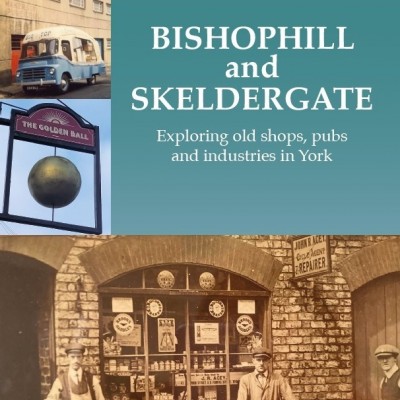19th April 2021
A tragic figure of singular promise
Our chair, Anne Houson, writes about her research into a local composer who died tragically young.
STOP PRESS BBC Radio 4 Extra have a dramatisation of William Baines' life and music, 'Goodnight to Flamboro', by Martyn Wade, available to listen to during May 2021. Well worth a listen here on BBC Sounds.
In 1917, a frail teenager, called William Baines, moved into 91 Albemarle Road, York. His father was the newly appointed musical director of the Electric Theatre in Fossgate, York. The Electric Theatre was a cinema, not a theatre, the first purpose built cinema in York. William started to work there for his father as a cinema pianist.
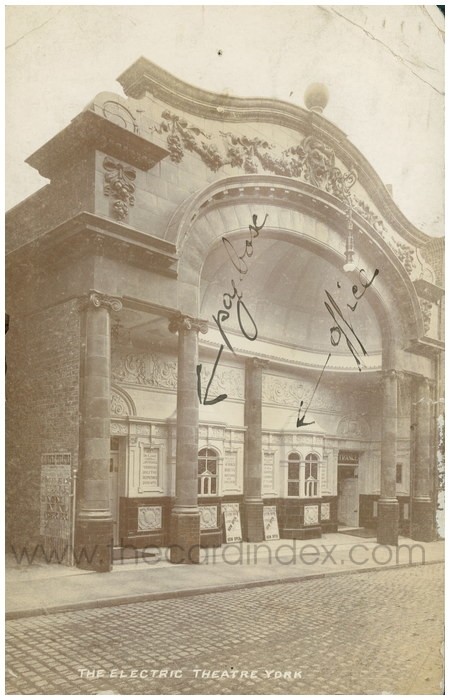 However, William was much more than a cinema pianist. In his short life, he wrote around 150 works, mostly for piano, including a symphony, a violin sonata, and vocal and chamber music. He composed the majority of his works at Albemarle Road. Sadly he never heard his symphony played.
However, William was much more than a cinema pianist. In his short life, he wrote around 150 works, mostly for piano, including a symphony, a violin sonata, and vocal and chamber music. He composed the majority of his works at Albemarle Road. Sadly he never heard his symphony played.
William was born in 1899 and brought up as a Primitive Methodist. By the time he arrived in York, he was used to performing at local chapels. The first record of him performing in York is on 19 December 1917, in the schoolroom at Nunnery Lane Mission Hall, for the Primitive Methodist Chapel at Victoria Bar.
The Electric Theatre Fossgate, 1910 (The Card Index)
The building now houses the Cosy Club
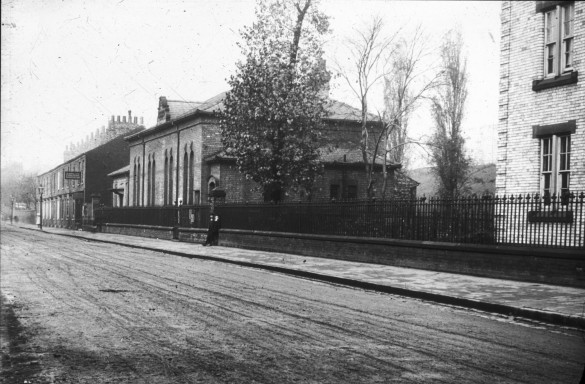
Nunnery Lane Mission Hall
William practised on the piano for several hours a day, to the delight or resignation of his neighbours in Albemarle Road. He had done some formal music study at the Yorkshire Training College of Music in Leeds before he came to York, but after he arrived he continued to study by himself, at home.
He loved nature and the countryside and this clearly inspires his work. In May 1918 he cycled to the old churchyard at Bishopthorpe and writes in his diary:
'During the noon hour I cycled to Bishopthorpe – & sat underneath the trees, in the old churchyard at the bend of the river. What a divine spot it is. No noise, only the singing of the birds, the buzzing of the bees – and the murmur of the river. But what music!'
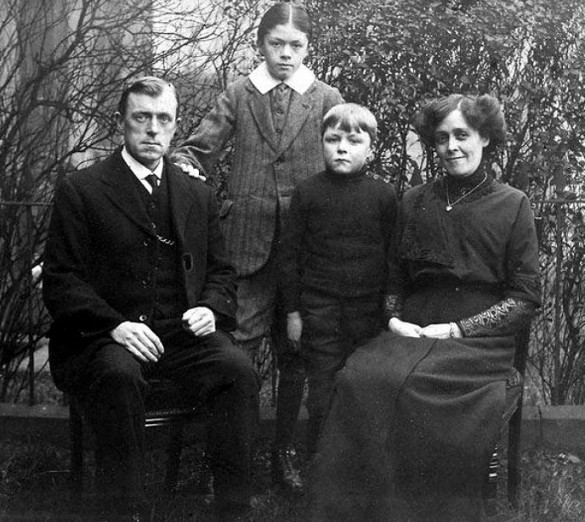 William Baines family group - William Baines with his parents, George William and Mary Alice Baines, and younger brother Edward Baines. – courtesy of Steve Wilson at ossett.net
William Baines family group - William Baines with his parents, George William and Mary Alice Baines, and younger brother Edward Baines. – courtesy of Steve Wilson at ossett.net
William was rejected for active service in the army because of his poor physique. His military records and entries in his diaries record that he was 5’ 8”, with a 28” chest and weighed only seven stone. However, as more and more manpower was needed for the war he was eventually called up in October 1918, to train as a flying officer’s batman at Blandford Camp in Dorset. It is debatable whether anyone should have been admitted to Blandford at that time, as 'Spanish Flu' had hit the camp in September, and by the end of October, 59 men had died there. After two weeks, William was so gravely ill that the military sent a telegram to his mother at Albemarle Road. William spent the next 13 weeks at the Military Hospital on Fulford Road, York. He was still in hospital when the armistice was signed in November 1918.
It was around this time that William met the painter Karl Wood, who had been in hospital at Nunthorpe Hall, recuperating from a war injury to his foot. Karl heard William playing the piano at a party, and took it upon himself to make sure William’s work was published. Karl, a Roman Catholic, introduced William to the nuns at St Mary’s Convent on Blossom Street. The sisters let him practise there on their Bechstein grand piano, and he gave at least three recitals there in 1919. One of his most popular works today is Seven Preludes. William wrote the second prelude after he heard a blackbird singing in the convent’s garden. The trill of the blackbird can be clearly heard in the piece.
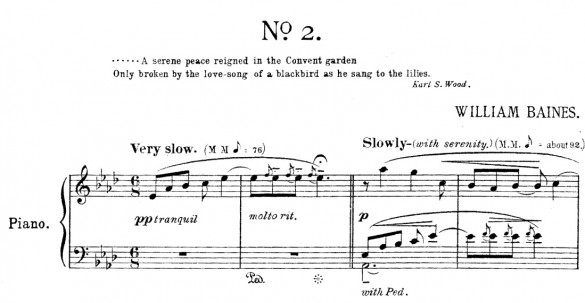
In May 1919 William learned that, thanks to Karl Wood, Elkin and Co were to publish his Seven Preludes. They also published Paradise Gardens, probably his best-known work. In 1918, William had taken a walk on the City Walls. In those days, the gardens of the Royal Station Hotel were magnificent, with manicured lawns and a fountain, and it was these gardens that moved William to write the hauntingly beautiful Paradise Gardens. After publication, William started to become well known in musical circles. He played his first big concert at Tempest Anderson Hall in May 1919. This hall, in the Yorkshire Museum Gardens was then quite new, having been built in 1912. It had excellent acoustics and seated 300.
Sadly, as William’s reputation grew, his health declined. He was suffering from a type of tuberculosis. In 1920, William travelled to the East Yorkshire coast, hoping to have a recuperative break. It was here that he composed Goodnight to Flamboro’, a piano work that evokes crashing waves and sea caves.
In July 1921 William made friends with Lady Benjamin Dawson, who lived at Nun Appleton Hall. Lady Dawson was an accomplished amateur pianist and was keen to listen to and play William’s music. Neighbours at Albemarle Road are certain to have noticed William being collected from Albemarle Road in a Rolls Royce, by the Dawson's chauffeur.
Baines at the piano –William at the piano, probably in Albemarle Road - courtesy of Steve Wilson at ossett.net
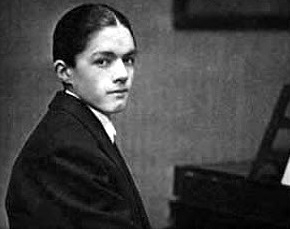
Baines sitting on a step – William often wrote large chords for big hands – it is evident that he would have had no problem playing them. Photo taken shortly before William died. - courtesy of Steve Wilson at ossett.net
In March 1922 Karl Wood invited William to play what would be his last concert, in Gainsborough. From William’s point of view, the concert was difficult, but he seems to have retained a wry sense of humour despite the setbacks to the performance. He writes in his diary that the piano was appalling and out of tune, but the audience seemed to have enjoyed it to such an extent that one dear old lady clapped so much that a bird dropped out of her hat!
William Baines died on 6 November 1922, at home. He was buried in Horbury, near Wakefield, where he had spent his childhood.
Shortly after his death, subscriptions were invited for a memorial tablet, to be erected in York Minster in William’s honour. Gustav Holst and the Archbishop of York, among others, subscribed, but after some consultation, the plan floundered, as it was thought that William did not have a large enough body of work. When this decision was made, only handful of his 150 works had been published. This is no longer the case. Many of his works are now published, recorded and played. William Baines has now achieved the popularity that was predicted for him when the Yorkshire Post and Leeds Intelligencer wrote on 8 November 1922 that Baines had been a figure of 'singular promise'.
William’s symphony, which he himself never heard, was played for the first time by the Airedale Symphony Orchestra at Grassington Festival in 1991.

